Millions of people in the busy center of New York rely on the Supplemental Nutrition Assistance Program (SNAP) to feed their families. People who need it most get monthly help from this important service, which is like a lifeline.
People who get SNAP benefits can use their cards at thousands of shops and grocery stores across the state. These benefits mostly help working people with low incomes, seniors, people with disabilities, and others who are having trouble with money by making sure they can get food they need.
Requirements to qualify for SNAP
Residents must meet certain income requirements in order to get this important help. But the only guaranteed way to find out if you’re eligible is to fill out an application.
The New York State Office of Temporary and Disability Assistance (OTDA) says, “Just because your household’s gross income is below these amounts does not mean you will be eligible for a benefit.”
To find out if you are eligible for SNAP and how much you will get, you must make a SNAP budget for your family. You have to apply for SNAP benefits in order to find out if your family is qualified.
- Benefit from SNAP by applying and understanding the process.
- Check your household’s gross income against eligibility requirements.
- Apply to find out your specific benefit amount.
The income limits and highest monthly benefits are changed every year to account for inflation. These changes happen every year at the beginning of October and stay in place until the end of September the following year.
Opportunities for New Yorkers
With the income limits going up, some New Yorkers who couldn’t get benefits before might now be able to if their yearly income has stayed the same.
Understanding the Changes
Here’s what you need to know about the new SNAP income limits and monthly payout limits that went into effect on October 1.
Income Eligibility Explained
Residents must have an income below certain levels in order to get SNAP benefits. How high these limits are depends on how many people live in the home.
Here is a list of the income limits for the Supplemental Nutrition Assistance Program (SNAP) that will stay in place until September 2025.
Income Guidelines for Households Without Earned Income
Note: These guidelines apply to households with no elderly or disabled members.
1-Person Household
- Monthly Gross Income: $1,632
- Annual Gross Income: $19,584
2-Person Household
- Monthly Gross Income: $2,215
- Annual Gross Income: $26,580
3-Person Household
- Monthly Gross Income: $2,798
- Annual Gross Income: $33,576
4-Person Household
- Monthly Gross Income: $3,380
- Annual Gross Income: $40,560
5-Person Household
- Monthly Gross Income: $3,963
- Annual Gross Income: $47,556
6-Person Household
- Monthly Gross Income:
- Annual Gross Income:
For financial planning, it’s important to know the Income Guidelines for families with earned income, especially those that don’t have any elderly or disabled members. Here is a full list of the monthly and yearly gross income limits for different types of households.
Income Guidelines for Multi-Person Households
7-Person Household
When you have a household of seven people, the following income guidelines apply:
- Monthly Gross Income: $5,129
- Annual Gross Income: $61,548
8-Person Household
For households comprising eight individuals, the income criteria include:
- Monthly Gross Income: $5,712
- Annual Gross Income: $68,544
Additional Persons
Every additional person in the household increases the income guidelines by:
- Monthly Gross Income: $583+
- Annual Gross Income: $6,996+
Income Guidelines for Households with Earned Income
These guidelines are specific for households without elderly or disabled members, ensuring they meet the necessary financial requirements.
1-Person Household
- Monthly Gross Income: $1,883
- Annual Gross Income: $22,596
2-Person Household
- Monthly Gross Income: $2,555
- Annual Gross Income: $30,660
3-Person Household
- Monthly Gross Income: $4,546
- Annual Gross Income: $54,552
Families can use these financial rules to figure out which programs they are eligible for and to make good decisions about how to spend their money.
It is very important to know the income limits for households, especially when handling money for families of different sizes. Here is a full list of the monthly and yearly gross incomes for each type of family.
Income Breakdown by Household Size
3-Person Household
- Monthly Gross Income: $3,228
- Annual Gross Income: $38,736
4-Person Household
- Monthly Gross Income: $3,900
- Annual Gross Income: $46,800
5-Person Household
- Monthly Gross Income: $4,573
- Annual Gross Income: $54,876
6-Person Household
- Monthly Gross Income: $5,245
- Annual Gross Income: $62,940
7-Person Household
- Monthly Gross Income: $5,918
- Annual Gross Income: $71,016
8-Person Household
- Monthly Gross Income: $6,590
- Annual Gross Income: $79,080
Each Additional Person
- Monthly Gross Income: $673+
- Annual Gross Income: $8,076+
Special Considerations
These rules can help people who have to pay for care for an elderly or disabled family member or someone who depends on them understand how income levels can change depending on their needs.
For good financial planning, you need to know how much money different family sizes make. Let’s look more closely at how the gross income is split up for families with one to eight people.
1-Person Household
For a single-person household, the monthly gross income is $2,510, which translates to an annual gross income of $30,120.
2-Person Household
In a two-person household, the monthly gross income increases to $3,407, making the annual gross income $40,884.
3-Person Household
A household with three members sees a monthly gross income of $4,303, resulting in an annual gross income of $51,636.
4-Person Household
For a family of four, the monthly gross income stands at $5,200, with an annual gross income reaching $62,400.
5-Person Household
A five-person household has a monthly gross income of $6,097, translating to an annual gross income of $73,164.
6-Person Household
When it comes to a six-member household, the monthly gross income is $6,993, equating to an annual gross income of $83,916.
7-Person Household
In a household of seven, the monthly gross income reaches $7,890, leading to an annual gross income of $94,680.
8-Person Household
Finally, for an eight-person household, the monthly gross income is yet to be specified, but understanding the trends can help anticipate future financial planning needs.
Monthly Gross Income: $8,787
Annual Gross Income: $105,444
Income Considerations for Additional Household Members
For each additional person in the household, the monthly gross income increases by $897, while the annual gross income rises by $10,764.
Maximum Monthly Benefits
The maximum monthly SNAP benefits you can receive depend on the number of people living in your household. Understanding these amounts is essential for budgeting and planning.
SNAP Benefits Breakdown by Household Size
Let’s explore how much participants in the program can receive based on their household size:
-
1-person household: $292
-
2-person household: $536
-
3-person household: $768
-
4-person household: $975
-
5-person household: $1,158
-
6-person household: [benefit amount not specified]
If you’re curious about how SNAP benefits can support your household, understanding the details is crucial. These benefits are designed to help families afford essential food items, but there are specific guidelines on what can and cannot be purchased. Let’s break it down for you.
SNAP Benefits Allotment for Households
For those managing a large family, it’s important to know the SNAP benefit amounts available:
- $1,390 for a 7-person household
- $1,536 for an 8-person household
- For each additional person, add $222
Eligible Uses of SNAP Benefits
Recipients of SNAP benefits must adhere to guidelines on what purchases are allowed.
Eligible Items
SNAP benefits can be used to buy a variety of nutritious food items, including:
- Breads and cereals
- Fruits and vegetables
- Meats, fish, and poultry
- Dairy products
Ineligible Items
There are certain items that SNAP benefits cannot be used to purchase, such as:
- Beer, wine, liquor, cigarettes, or tobacco
- Any nonfood items, including:
- Pet food
- Soap, paper products, household supplies
- Vitamins and medicine
- Food that will be eaten in the store
- Hot foods
How to Apply
The process of applying for SNAP benefits involves knowing both if you are eligible and how to apply. To improve your chances of approval, make sure you have all the paperwork you need and follow the instructions exactly.
It’s easier than you think to get SNAP benefits in New York. To get started, just follow these easy steps:
Simple Steps to Apply for SNAP Benefits Online
New Yorkers looking to apply for SNAP benefits can do so conveniently online. Here’s how:
- Gather all necessary documents: Make sure you have all the required paperwork ready, including:
- Recent pay stubs
- List of household resources
- Current rent/mortgage statement
- Current property tax bill
- Current homeowner’s insurance bill
- Social Security card
- Log on or register: Visit myBenefits.ny.gov to log in or create a new account.
- Answer questions: Provide detailed answers to a series of questions about your household.
- Submit your application: Once everything is filled out, submit your application for review.
Recovering Stolen Benefits
In 2022, Congress took a significant step to protect beneficiaries. A law was passed that mandates states to establish systems for replacing stolen Supplemental Nutrition Assistance Program (SNAP) benefits. This includes losses due to electronic theft methods such as:
- Card skimming
- Cloning
- Third-party misrepresentation
- Phishing
Do not worry if you become a victim of these scams; steps are already being taken to help you get your benefits back.
The USDA’s Food and Nutrition Service (FNS) continues to put a high focus on making sure the integrity of our nutrition assistance programs. Dean, who is the Deputy Under Secretary for Food, Nutrition, and Consumer Services at the USDA, said, “SNAP fraud is a horrible crime that targets low-income families.” We are working closely with state agencies to make sure that people who are having these kinds of problems get the help they need.
Understanding the Replacement Process
Different states have very different rules about how to replace benefits. People in those areas are invited to go to the USDA website to find out more about how to apply for replacement benefits in their area. And this makes sure that everyone can get the help they need.
Updates for New York Residents
New York’s new method for getting back benefits began in August 2023. This means that people in the Empire State can now ask for money back if someone steals their benefits online. That being said, this is a big step forward in protecting the safety of New York’s most vulnerable people.
Should your Electronic Benefits Transfer (EBT) card be stolen, it is important to know the steps you need to take to get your money back. The first thing you should do is report your stolen EBT card right away. You can call 1-888-328-6399, go to ConnectEBT.com, or use the ConnectEBT app on your phone to do this.
Important Steps for Reimbursement
Bear in mind that replacement benefits will not be issued until the compromised EBT card has been officially reported as stolen. It’s imperative to complete this step to initiate the process of recovering your benefits.
Eligibility for Replacement SNAP Benefits
It’s important to note that replacement SNAP benefits will only be available if the theft occurred on or after October 1, 2022. This date is crucial for determining eligibility for replacement.
Benefits Eligible for Replacement
The following benefits are eligible for replacement:
- Regular, ongoing SNAP benefits
- Restored, replacement, or retroactive issuances
- Disaster SNAP (D-SNAP) benefits
- Supplemental Emergency Allotments (EA)
In this case, it’s important to note that Pandemic EBT (P-EBT) food benefits are not SNAP benefits and cannot be replaced.
It’s important to know how the Supplemental Nutrition Assistance Program (SNAP) works, especially when you need to replace benefits that were stolen. It’s important to know that you can only replace your SNAP benefits twice during the government fiscal year, which is October 1 through September 30. As a rule, the replacement benefits can’t be more than the amount that was stolen or twice the amount that was got each month before it was stolen.
Submitting a Claim for Replacement Benefits
The procedure for filing a claim varies slightly depending on whether you received your benefits in New York City or elsewhere in the state. Understanding these differences is key to ensuring a smooth process.
Essential Steps for Filing a Claim
Whether you are filing your claim in New York City or another county, the initial step is to compile all necessary information. This includes:
- Your Client Identification Number (CIN)
- Your case number
- Your current mailing address
- Detailed information about each fraudulent transaction
Residents looking to review their EBT transaction history for any potential fraudulent charges have several convenient options. You can access your information by visiting ConnectEBT, using the ConnectEBT mobile app, or by calling 1-888-328-6399.
Submitting Claims in New York City
If you’re a resident of New York City, it’s essential to submit your claims to the city’s Department of Social Services’ Human Resources Administration. For the quickest and most convenient service, city residents are strongly encouraged to submit their claims online.
Alternative Submission Methods
For those who prefer or require alternative methods, claim forms can also be printed and submitted in various ways:
- In-person drop-off at any Benefits Access Center or SNAP Center
- Mailed to the following address: Department of Social Services, P.O. Box 02-9121, Brooklyn GPO, NY 11202
Submitting Claims Outside New York City
New Yorkers who receive their benefits in counties outside of New York City should submit their claims directly to their local department of social services. This can be done in a few ways:
- In-person at the local office
- Via mail to the appropriate department
- Through the NYDocSubmit mobile app, if it is available in your county
STATEN ISLAND, N.Y. — Every month, millions of New Yorkers depend on the Supplemental Nutrition Assistance Program (SNAP) to ensure their families have enough to eat.
Understanding SNAP Benefits
These electronic benefits are a lifeline, allowing recipients to purchase specific food items from a vast network of grocery stores and retailers. The program is designed to support a broad spectrum of individuals, including:
- Low-income working residents
- Senior citizens
- People with disabilities
- Others in need
Eligibility Criteria
Residents must meet certain income standards in order to be eligible for SNAP. But the only surefire way to find out if you’re eligible is to fill out an application.
The Office of Temporary and Disability Assistance (OTDA) in New York State says, “Even if your household’s gross income falls below these thresholds, that doesn’t mean you’ll be eligible for benefits.” To figure out who is eligible for SNAP and how much they might get, a full SNAP budget calculation is needed. Application is the only way to find out if your family is eligible for SNAP payments.
The income limits and highest monthly benefits for SNAP are changed every year to keep up with inflation. These changes happen every year at the start of October and stay in place until the end of September.
Because of these higher income limits, some New Yorkers who weren’t able to get benefits last year might be able to this year, as long as their yearly income has stayed the same.

Understanding the New SNAP Guidelines
Here’s everything you need to know about the updated SNAP income eligibility thresholds and maximum monthly benefits, which took effect on October 1.
Income Eligibility Requirements
To qualify for SNAP benefits, residents must have an income below specific thresholds. These thresholds vary depending on the number of family members in the household.
- Income limits are adjusted annually to keep pace with inflation.
- Household size plays a significant role in determining eligibility.
- Changes take effect starting each October, influencing eligibility for the following year.
Keep up with these changes, as they may have a big effect on your ability to get benefits. Your qualification status could have changed because of these changes, even if your circumstances haven’t changed.
Are you interested in knowing how much money you need to qualify for SNAP? Let’s look at the rules that will be in place until September 2025.
Income Guidelines for Households without Earned Income
(Applicable to households without any elderly or disabled members)
1-Person Household
- Monthly Gross Income: $1,632
- Annual Gross Income: $19,584
2-Person Household
- Monthly Gross Income: $2,215
- Annual Gross Income: $26,580
3-Person Household
- Monthly Gross Income: $2,798
- Annual Gross Income: $33,576
4-Person Household
- Monthly Gross Income: $3,380
- Annual Gross Income: $40,560
5-Person Household
- Monthly Gross Income: $3,963
- Annual Gross Income: $47,556
6-Person Household
- Monthly Gross Income: [missing data]
- Annual Gross Income: [missing data]
People who want to get help through the Supplemental Nutrition Assistance Program need to know what these limits are. Keep up with the news and use these numbers to figure out if you are eligible.
When making a budget or looking into financial aid options, it can be very helpful to know the income limits for different family sizes. For households of different sizes, this is a full list of the monthly and yearly gross income limits for people who work and don’t have any elderly or disabled family members.
Income Guidelines for Larger Households
7-Person Household
- Monthly Gross Income: $5,129
- Annual Gross Income: $61,548
8-Person Household
- Monthly Gross Income: $5,712
- Annual Gross Income: $68,544
For Each Additional Person
- Monthly Gross Income: $583+
- Annual Gross Income: $6,996+
Income Guidelines for Smaller Households
These guidelines apply to households with earned income, excluding those with elderly or disabled members.
1-Person Household
- Monthly Gross Income: $1,883
- Annual Gross Income: $22,596
2-Person Household
- Monthly Gross Income: $2,555
- Annual Gross Income: $30,660
3-Person Household
- Monthly Gross Income: $4,546
- Annual Gross Income: $54,552
These numbers are very important for figuring out who can get different financial and social services. Knowing these tips will help you plan your finances better, making sure that your family is ready for any financial aid that might come your way.
It is very important to understand income standards, especially for households of different sizes. Let’s get into the details of how much monthly and yearly gross income different household sizes need. For spending and planning your finances, these numbers are very important.
Income Guidelines by Household Size
3-Person Household
- Monthly Gross Income: $3,228
- Annual Gross Income: $38,736
4-Person Household
- Monthly Gross Income: $3,900
- Annual Gross Income: $46,800
5-Person Household
- Monthly Gross Income: $4,573
- Annual Gross Income: $54,876
6-Person Household
- Monthly Gross Income: $5,245
- Annual Gross Income: $62,940
7-Person Household
- Monthly Gross Income: $5,918
- Annual Gross Income: $71,016
8-Person Household
- Monthly Gross Income: $6,590
- Annual Gross Income: $79,080
For Each Additional Person
- Monthly Gross Income: Additional $673
- Annual Gross Income: Additional $8,076
Special Considerations
It’s even more important for families with an older or disabled member or who pay for care for a dependent to understand these income standards. Managing money well can help these families deal with some of their problems.
Understanding Gross Income by Household Size
When managing your money, it’s important to know how much your family makes in gross income. A clear picture of your income can make all the difference when you’re making a budget, asking for a loan, or just trying to get by. Let’s look at the average monthly and yearly gross pay for different sized households.
1-Person Household
- Monthly Gross Income: $2,510
- Annual Gross Income: $30,120
2-Person Household
- Monthly Gross Income: $3,407
- Annual Gross Income: $40,884
3-Person Household
- Monthly Gross Income: $4,303
- Annual Gross Income: $51,636
4-Person Household
- Monthly Gross Income: $5,200
- Annual Gross Income: $62,400
5-Person Household
- Monthly Gross Income: $6,097
- Annual Gross Income: $73,164
6-Person Household
- Monthly Gross Income: $6,993
- Annual Gross Income: $83,916
7-Person Household
- Monthly Gross Income: $7,890
- Annual Gross Income: $94,680
8-Person Household
- Monthly Gross Income: Explore our upcoming updates for this category!
If you know these numbers, you can make smart choices about your future finances and make sure your family is on the right track. Remember that figuring out your gross income is only the beginning of making a long-term plan for your money.
It’s important to know how your finances change over time, especially when you’re making plans and budgets. It can make a big difference to have clear views when you’re looking at your income or benefits.
Monthly and Annual Gross Income
Finding out how much money you make each month is the first thing you need to do to manage your money. As an example, if your gross income each month is $8,787, your gross income each year will be $105,444. Knowing these numbers can help you figure out how your finances are doing and make plans for the future.
These numbers go up for every extra person living in your home:
- Monthly Gross Income: $897+
- Annual Gross Income: $10,764+
Maximum Monthly Benefits
The maximum monthly SNAP benefits you can receive depend on the size of your household. Here’s a breakdown of what you might be eligible for:
1-person household
- $292
2-person household
- $536
3-person household
- $768
4-person household
- $975
5-person household
- $1,158
6-person household
If you know these facts, you can make better decisions about your financial planning and how to use your benefits. Always keep these numbers in mind as you deal with your money.
It is very important to understand the financial side of running a home, especially when dealing with resources like SNAP benefits. Knowing the details can make a difference, whether you live with seven people or a bigger family.
SNAP Benefit Amounts by Household Size
For a 7-person household, the allotment is $1,390, while an 8-person household receives $1,536. For every additional person, the benefits increase by $222.
Eligible Uses of SNAP Benefits
Recipients of SNAP benefits are limited to purchasing specific items. Understanding what you can buy ensures you make the most of your benefits.
Eligible Items
- Breads and Cereals
- Fruits and Vegetables
- Meats, Fish, and Poultry
- Dairy Products
Ineligible Items
There are certain restrictions on what cannot be purchased with SNAP benefits. These include:
- Beer, Wine, Liquor, Cigarettes, or Tobacco
- Nonfood items such as:
- Pet Food
- Soap
- Paper Products
- Household Supplies
- Vitamins and Medicine
- Food consumed in the store
- Hot foods
How to Apply for SNAP Benefits
For people who qualified, applying for SNAP benefits is a must. Knowing the steps and making sure you have the right paperwork can speed up the application process and help you get the help you need.
Do you live in New York and want to get SNAP benefits? To start working online, just follow these easy steps:
How to Apply for SNAP Benefits in New York
Applying for SNAP benefits in New York is a simple process when you have all the necessary information at hand. Here’s what you need to do:
- Gather all the necessary documents including:
- Recent pay stubs
- List of household resources
- Current rent/mortgage statement
- Current property tax bill
- Current homeowner’s insurance bill
- Your Social Security card
- Log on to or register at myBenefits.ny.gov to create an account.
- Answer a series of questions regarding your household.
- Submit your application.
Recovering Stolen Benefits
Have your SNAP benefits been compromised? Here’s what you need to know about recovering them:
Protecting Your SNAP Benefits
Congress passed a new law in 2022 that requires states to set up ways to help people get back their Supplemental Nutrition Assistance Program (SNAP) benefits that were stolen. Card skimming, cloning, third-party fraud, and phishing are some of the technological ways that these benefits can be lost. New York is trying to make sure that its citizens can safely get their benefits if something like this happens.
The USDA Food and Nutrition Service (FNS) continues to put a high focus on making sure the integrity of our nutrition assistance programs. “Keeping our nutrition assistance programs honest is very important to FNS,” said Stacy Dean, who is the Deputy Under Secretary for Food, Nutrition, and Consumer Services at the USDA.
“SNAP fraud is a disgusting crime that takes advantage of low-income families,” she said over and over. Together with state agencies, the USDA is working hard to make sure that people who are facing these problems get the help they need.
Understanding the Replacement Process
How to get new benefits changes from state to state. People who want to know how to apply for their new benefits should go to the USDA website, where they will find detailed information that is specific to their area.
New York’s Reimbursement System
The benefit collection system in New York was put into place in August 2023. With this new technology, people in the Empire State can now apply to get their benefits back if they were stolen electronically. This way, they can get back what’s truly theirs.
The first thing you need to do to get your stolen Electronic Benefits Transfer (EBT) card back is to report it as stolen right away. You can call 1-888-328-6399, go to ConnectEBT.com, or use the ConnectEBT app on your phone to do this.
Important Steps to Follow
It’s crucial to understand that no replacement benefits will be provided until the stolen EBT card is officially reported. Make sure you complete this step as soon as possible to avoid delays.
Eligibility for Replacement SNAP Benefits
Replacement SNAP benefits can only be issued if the theft occurred on or after October 1, 2022. This ensures that eligible recipients receive the necessary support.
Benefits Eligible for Replacement
The following benefits are eligible for replacement:
- Regular, ongoing SNAP benefits
- Restored, replacement, or retroactive issuances
- Disaster SNAP (D-SNAP) benefits
- Supplemental Emergency Allotments (EA)
It’s important to remember that Pandemic EBT (P-EBT) food benefits are not SNAP benefits and cannot be replaced by other benefits.
You can get new SNAP benefits up to twice a year during the government fiscal year, which is October 1 through September 30. The most that can be replaced in SNAP benefits is either the exact amount that was stolen or twice the amount that was received in benefits in the month before the theft, whichever is less.
Steps to Submit a Claim
The process of submitting a claim can differ slightly depending on whether the individual received their benefits in New York City or another area of the state.
Initial Steps for All Counties
Whether you’re submitting your claim in New York City or any other county, the first step involves gathering all the essential information. Ensure you have the following:
- Your Client Identification Number (CIN)
- Case number
- Current mailing address
- Detailed information about each fraudulent transaction
Residents can look at their EBT transaction records in a number of different ways to see if there are any possible fraudulent charges. This data can be found on ConnectEBT, the ConnectEBT mobile app, or by calling 1-888-328-6399, which is a toll-free number.
Submitting Claims in New York City
If you are a resident of New York City, it’s essential to submit your claims to the city’s Department of Social Services’ Human Resources Administration. For a quick and hassle-free process, residents are strongly encouraged to submit their claims online.
Alternative Submission Methods
For those who prefer other methods, claim forms can be printed and either dropped off in person at any Benefits Access Center or SNAP Center, or mailed to the following address:
- Department of Social Services
- P.O. Box 02-9121
- Brooklyn GPO, NY 11202
Submitting Claims Outside New York City
People in New York who live in areas other than New York City must send their claims to the social services department in their own county. You can do this in person, by mail, or with the NYDocSubmit app on your phone, if it’s available in your county.
Also See:- 48 hours to request SNAP replacement: Do not miss out on this Food Stamps money

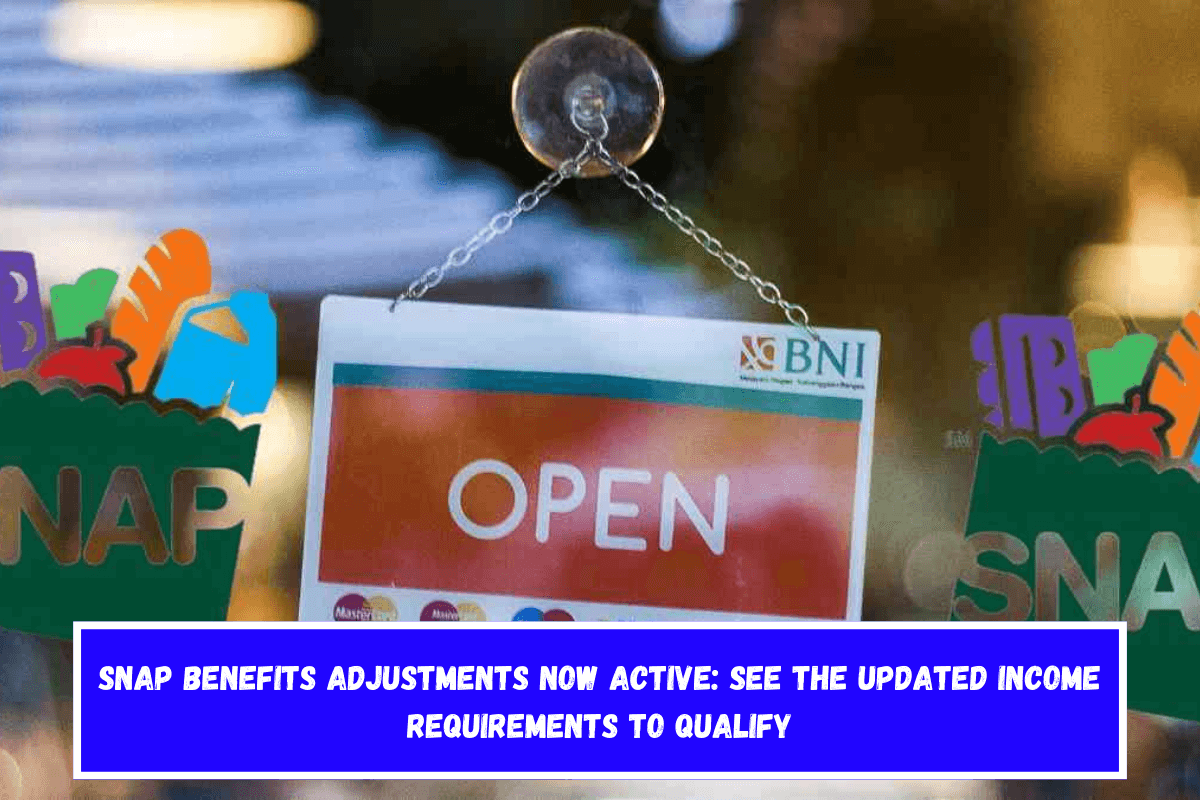
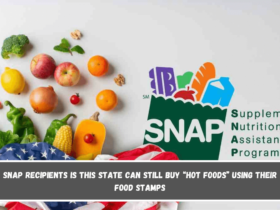




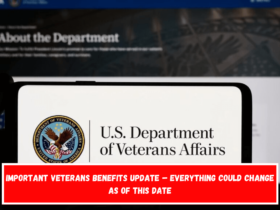

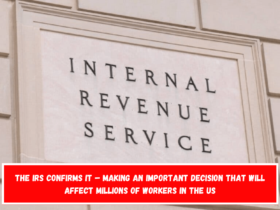
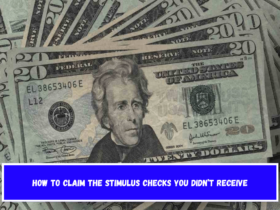
Leave a Reply